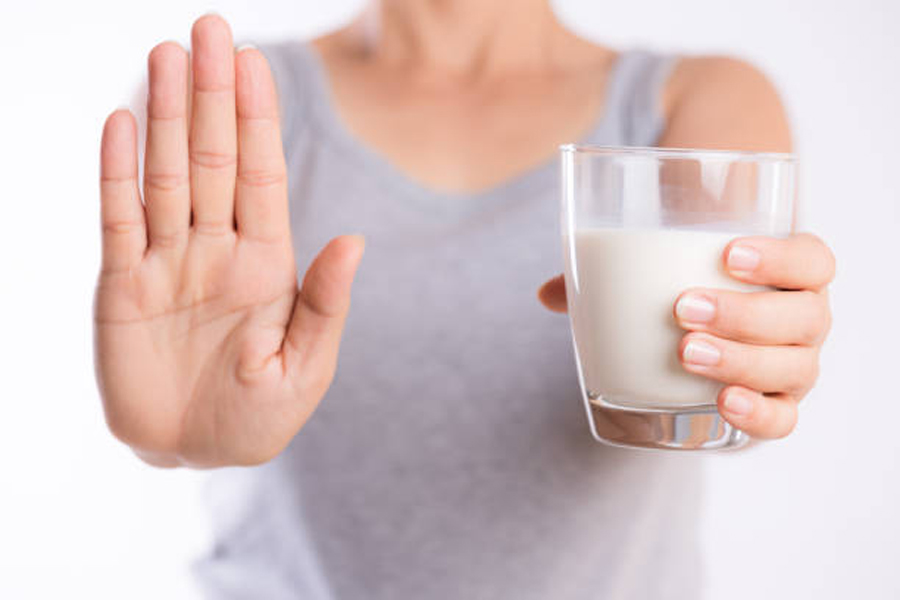
Having a milk allergy can be a devastating condition. You can imagine missing the nutrition from dairy products. This issue can make it difficult to get the nutrition that you need. In particular, parents face challenges wondering about what the best option for feeding their children is who have this type of allergy.
Maybe you are one of them. You experience severe reactions when you drink a glass of milk or eat some butter. If so, you are in the right place. In this blog, you will learn 8 effective solutions to deal with milk allergies. Keep reading to learn more.
Use a milk substitute
The first option is to opt for milk substitutes. You will find many different types of non-dairy milk that can substitute milk, such as soy, almond, rice, and coconut. Also, if the issue is lactose intolerance, goat’s milk, which has less lactose, can be a perfect option. These substitutes will reduce your chances of suffering from milk allergies.
Go for milk replacement in recipes
If you’re looking for a way to use non-dairy milk for cooking, you should consider almond or soy milk. These milk types have the same nutritional values and consistency as cow’s milk. However, it is important to carefully check the label on your preferred brand to ensure there are no dairy add-ons before buying them.
Also, you can opt for some types of cheese, such as vegan Parmesan (made from almonds), cashew cream sauce, and oat yogurt. You can consider other alternatives in case you want to bake. But remember, these substitutes do not work well for recipes requiring large amounts of milk. Nonetheless, they are a good way to avoid allergic reactions.
Eat fermented foods to help with your gut health
Fermented foods are a good source of nutrition when dairy is not your thing. Research findings show that they improve the microbial balance in your digestive system (dysbiosis). Fermented foods improve enzyme activity. The result is due to lactobacillus bacteria present in fermented foods.
In particular, fermented vegetables would be a perfect alternative for people who do not wish to eat dairy or have a lactose intolerance. Some of the best-fermented foods for this purpose include sauerkraut, kimchi, kefir, and sourdough bread. Eating these foods will boost your health as dairy products would.
Make your own yogurt from almond milk.
Yogurt is one way that you can get a daily calcium intake as it contains this mineral naturally. But this isn’t possible when you need to avoid cow’s dairy products due to a milk allergy or intolerances. However, there are some ways to make your own non-dairy yogurt using almond milk.
This milk enables you to enjoy full health benefits without any risks of dairy products. So, you do not need to avoid a yogurt treat. All you need is to get some almond milk, and you will be good to go.
Use coconut milk and cream.
Coconut products such as creams and milk are preferable replacements for dairy milk. These products are lactose and dairy-free. The advantage that these products have over soy products is that there aren’t any phytoestrogens. This means they don’t contain compounds with estrogenic effects.
These products also contain beneficial fatty acids that are rare in dairy or soy. So, they can be a perfect replacement for dairy and comes with extra benefits. As such, do not struggle to use allergy-causing dairy products when coconut ones can serve the purpose.
Make some healthy cheese alternatives.
No doubt, cheese is a good source of calcium and other important daily vitamins or minerals. Most cheese is a product of dairy, making them bad news for people with milk allergies. Fortunately, there is a way of making healthier choices for yourself to save you from such issues. Making your own cheese alternatives ensures better nutritional benefits too.
Find ways to get calcium from legumes.
Milk is another good source for getting your daily intake of protein. But you do not have a choice when you are allergic to it. For this reason, you need to find a substitute that provides the same level of nutrients.
Eating legumes such as beans, lentils, and chickpeas is a good way to complete the nutritional profile. This is because legumes are high in calcium, which works well as an alternative for dairy products. The calcium from legumes is a good way to boost your bone health. So, eat legumes if drinking milk will cause some allergic reactions.
Replace wheat flour with almond flour
If you cannot drink milk or dairy products, you can consider turning to almond flour for your baking purposes. Almond flour is a good substitute for wheat flour in terms of baking. Also, it works well as an alternative to regular milk. This flour provides essential nutrients found in milk and gives your baked dishes a similar taste and aroma.
However, almonds do not have enough calcium like in milk and dairy. For this reason, you need to make sure that you add other ingredients providing high calcium levels to ensure you meet your body demands.
Wrapping Up
As you can see, it’s possible to find alternatives that contain the same nutritional benefits as regular milk products. You do not need to eat dairy products that will cause severe allergic reactions in your body. Instead, you can use coconut, almond, and soya for the same purpose.
Remember, it would be better for your health if you could consume goat or almond milk regularly. These options are healthier than dairy ones. However, their taste and texture make them less appealing. But, your health is a priority. It is better to consume this diet than regret trying to cope with the milk and dairy allergies.
Comments
comments